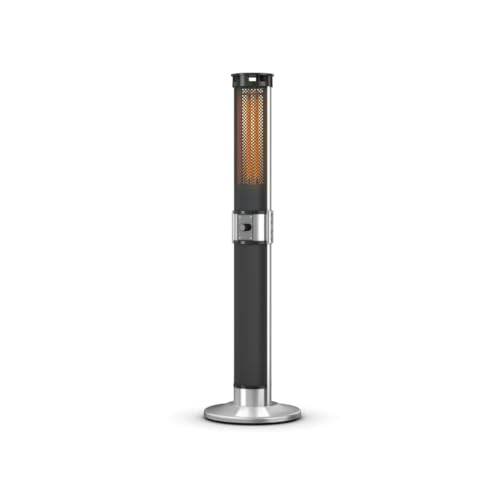Patio Heat Lamp Electric: A Simple Definition

How to Choose a Patio Heat Lamp Electric
When you're looking to heat your patio, there are numerous options. Electric heaters are more efficient than propane models that require refueling. They can be heated immediately by pressing a button or flipping a switch.
These units don't emit any gasses which could pose the risk of health hazards. Certain units come with adjustable heat settings to accommodate varying distances.
Type of Heater
You can enjoy your outdoor living space all through the evening and throughout the year by using the right patio heater. There are several types of patio heaters, such as freestanding propane and natural gas models as also wall- or ceiling-mounted electric radiant heaters. Your choice is contingent on the dimensions of your area, the current power sources, and your personal preference.
The majority of patio heaters use electricity, liquid or natural gas to generate heat. They emit heat through convection heating in combination with radiant heating. The output of heat from patio heaters is measured in watts which can be converted into British thermal units (BTUs) to give a comparative. more.. have adjustable temperature settings that give you more flexibility.
Patio heat lamps incorporate the use of a burner that is mounted on a pole and an open-pored screen that reflects the flames and radiates heat downwards to warm people, objects and furniture. Some have a reflector above the burner that can be plated with silver to decrease the amount of heat emitted upwards.
The most popular kind of patio heater, a gas patio heater, is often seen in outdoor areas of bars and restaurants since they produce a lot of heat quickly and distribute equally across all directions. They are great for warming multiple tables. These patio heaters can be portable and run off a propane tank or plumbed into your natural gas line with the latter offering more convenience and lower upfront installation costs, but also needing ongoing costs for fuel.
A increasing number of homes are outfitted with natural gas lines, making these the ideal solution for those who prefer to use gas-powered patio heaters. They are easy to set up, however they require a dedicated and functioning gas line to operate in a safe manner. There are portable natural gas heaters equipped with extension hoses which can assist in overcoming this limitation however they can also be a risk of tripping and also a fire hazard when not being used.
Safety
Electric patio heaters are safe to use in covered areas, as they allow heat to radiate upwards and not outward. However, they're not intended to be used on an open roof. The heater should be set at minimum 18" from the walls adjacent to it or 6" from the ceiling to prevent fire hazards.
Patio heaters made of propane and gas are usually safe to be installed in enclosed areas and are protected by an enduring cover designed for open-air use. These types of covers are typically made of fire-retardant canvas and have an open roof that can be closed. These kinds of patio heaters have safety concerns related to the flames and fumes they create. They should be placed away from items that ignite like chairs and curtains.
When installing a patio heat lamp electric or any kind of patio heater, make sure you follow the manufacturer's directions and safety guidelines carefully. Be sure to choose the one with UL and CSA certifications, and also read the owner's guide thoroughly. Be extra careful with pets and children and make sure the heater is not in their reach while it's running. Some patio heaters that are freestanding like EUROM's have an automatic tipping safety that shuts down the device in the event of a fall.
If your patio heater is connected to natural gas lines it is essential to inspect the condition of the line on a regular basis and test it for leaks by a qualified professional. If the line needs to be replaced, be certain to get an authorized plumber. A professional can determine whether the line is properly routed or should be run through an underground pipe. In addition, a professional can also make sure the heater for your patio is connected into an outlet that is GFCI (ground fault circuit interrupter) certified to guard against electrical fires and shocks.
Installation
The size of the patio heater is mounted affects how much heat it will radiate into the area. It is crucial that the heater be mounted at a safe distance from surfaces like plastic, which can deform and also wood, which can get too hot. Depending on the model of heater you may choose to place it on a structure or wall using standard mounting brackets. Some models have a soft start, which reduces peak current to safeguard your circuits.

